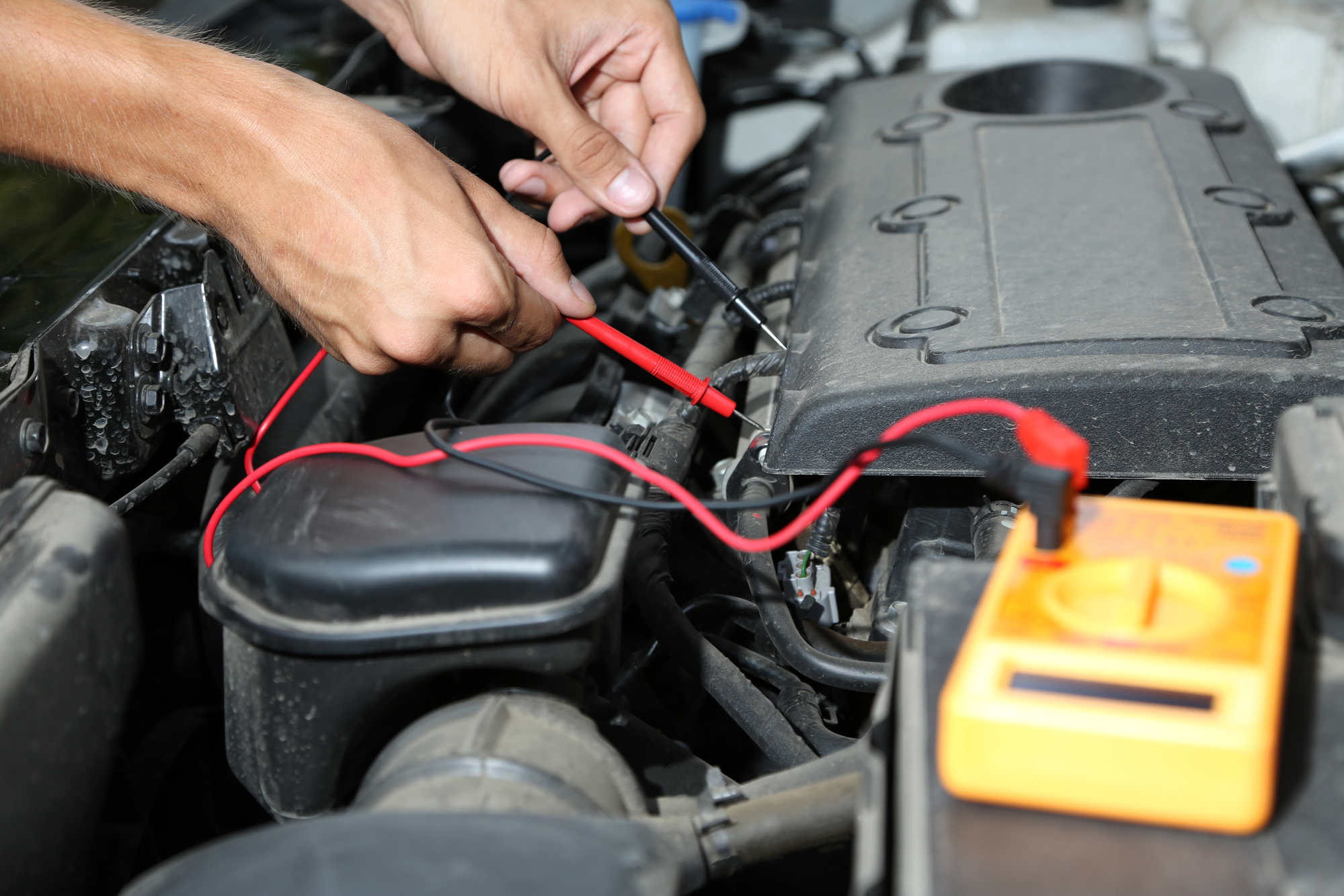Doing a regular car battery inspection is an important part of keeping your car safe and functional. A car battery inspection will allow you to make sure the battery can start your car and hold a charge. When you notice that cables are cracked or the terminals are corroded, it’s time to get your car battery serviced at a mechanic.
Anatomy of a Car Battery
Understanding how your car battery looks and how it works is a vital part of performing an effective car battery inspection. Your car battery will look similar to other car batteries and is enclosed in a case, which is designed to minimize vibration impact and extend battery life. On top of the case lid are two battery terminals.
Inside the case is battery acid, made of sulfuric acid and water. In addition, there are positive and negative plates, separated by a polyethylene plate called a PE separator. The plates are stacked into elements, and a cast-on-strap connects the elements to the terminal, providing an efficient electrical connection.
It’s never advisable to open a battery case, but understanding what’s inside it can help you know what you’re looking for as you complete your car battery inspection.
Typical Battery Failures in Phoenix
Many people believe that cars are more likely to die in cold weather, but that’s not entirely true. While cold weather does put a variety of stressors on a battery, extreme heat and desert climates do as well. In fact, heat shortens battery life quicker than cold weather.
The most common reason batteries fail in Phoenix are due to excessive heat, which causes the fluid inside the battery to evaporate and causes damage from the inside. In addition, dust and dirt in the engine can cause corrosion of the terminals. Finally, very dry air can cause battery cables to dry out and crack, leading to problems in the connection between the battery and the car.
Get in the habit of turning off the radio, wipers, media players, and other devices when the car is not in use. This will help extend battery life. However, even with careful care and regular car battery inspection, the battery won’t last forever. Be sure to have it replaced when you see signs of wear or failure.
How to Perform a Complete Car Battery Inspection
Performing a complete car battery inspection only takes a few minutes, but the peace of mind you get from knowing your battery is functioning well is priceless. Here are the steps to performing a complete car battery inspection:
- Examine the battery case. Make sure it’s free of corrosion, and wipe any dust or dirt off. If you see cracks or oozing at the top of the battery case, it’s time to replace the battery.
- Examine the brackets. If they are highly corroded, they need to be replaced. Make sure they hold the battery firmly. A vibrating battery will have a much shorter life and may damage other components.
- Check the battery terminals and posts for signs of corrosion. You may be able to have corrosion cleaned by a technician and avoid having to replace the battery outright.
- Tighten any loose cables.
- Make sure the fan belt isn’t loose. A loose fan belt can hamper a battery’s ability to recharge. Replace the fan belt if it is frayed or cracked.
- Watch and listen for warning signs of battery failure, such as lights dimming while idling, or clicking when you turn the ignition.
By doing a complete car battery inspection frequently, you can help extend the life of your battery. Not only that, you will also notice ahead of time if there are problems or if the battery needs to be replaced. This will reduce the likelihood of an expensive tow and repair.
If you want to ensure your battery is working well, or have more questions about car battery inspections, Hi-Tech Car Care is here to help. We’ll make sure your battery is in order and your car running smoothly. Call 602-224-0941 for an appointment today!






Join the discussion One Comment